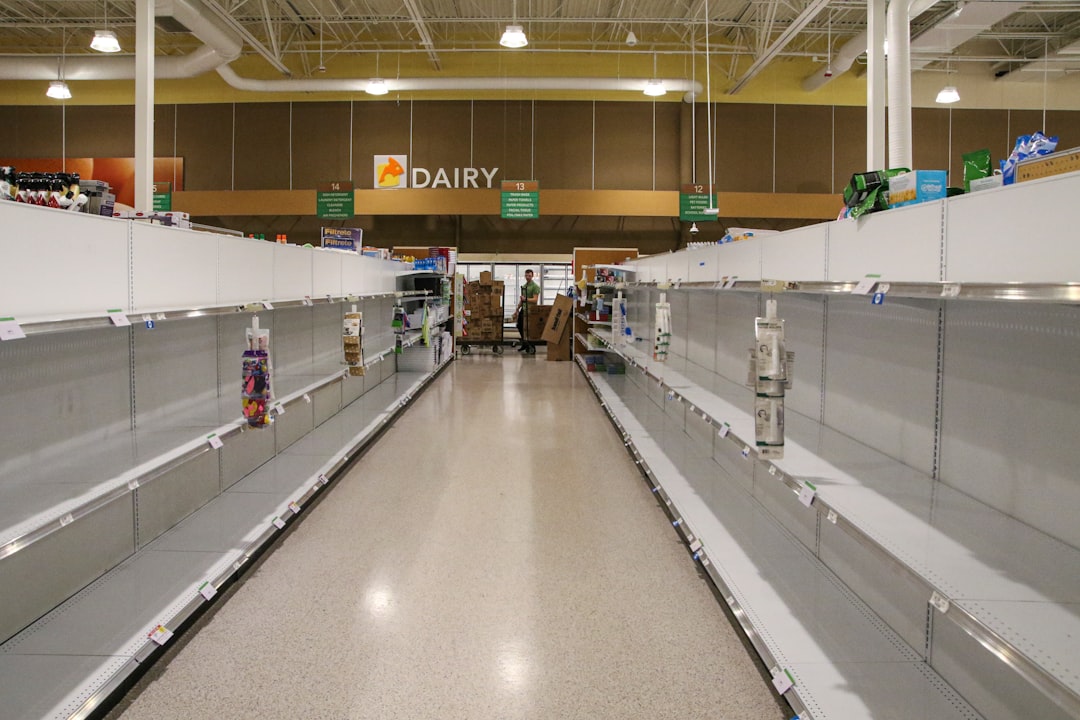Walmart, the retail giant known for its vast network of stores and commitment to low prices, has developed a strategic approach aimed at penetrating rural markets more effectively. This strategy, often referred to as the “Rural Encirclement Strategy,” focuses on expanding Walmart’s presence in less populated areas, where traditional retail options may be limited. By establishing a foothold in these communities, Walmart aims to provide essential goods and services while simultaneously enhancing its market share.
The company’s efforts reflect a broader trend in retail, where businesses are increasingly recognizing the potential of rural markets as viable sources of revenue. The Rural Encirclement Strategy is not merely about opening new stores; it encompasses a comprehensive understanding of the unique needs and challenges faced by rural communities. Walmart’s approach involves a combination of logistical innovation, community engagement, and tailored product offerings.
By addressing the specific demands of these areas, Walmart seeks to create a sustainable model that benefits both the company and the communities it serves. This strategy represents a significant shift in how large retailers view rural markets, moving from a one-size-fits-all approach to a more nuanced understanding of local dynamics.
Key Takeaways
- Walmart’s Rural Encirclement Strategy aims to reach and serve rural communities by tailoring products and services to their specific needs.
- Reaching rural communities presents unique challenges such as logistics and distribution, but it is important for companies like Walmart to invest in these areas.
- Walmart’s approach to rural encirclement involves investing in local economies, creating jobs, and building community partnerships to better serve these communities.
- Tailoring products and services to rural needs is a key aspect of Walmart’s strategy, as it allows the company to better meet the demands of these communities.
- The impact of Walmart’s Rural Encirclement Strategy is significant, as it not only benefits the company but also contributes to the growth and development of rural areas.
Understanding the Challenges of Reaching Rural Communities
Reaching rural communities presents a unique set of challenges that differ significantly from urban environments. One of the primary obstacles is the geographical dispersion of these areas, which often results in lower population densities and greater distances between potential customers. This can make it economically unfeasible for retailers to establish traditional brick-and-mortar stores, as the customer base may not justify the investment.
Additionally, rural areas may lack the infrastructure necessary to support large-scale retail operations, including reliable transportation networks and access to suppliers. Another challenge lies in understanding the cultural and social dynamics of rural communities. These areas often have distinct identities shaped by local traditions, values, and economic conditions.
Retailers must navigate these complexities to effectively engage with residents and build trust. Failure to do so can result in resistance from the community, making it difficult for businesses to establish a foothold. Therefore, a deep understanding of local customs and preferences is essential for any retailer looking to succeed in rural markets.
The Importance of Reaching Every Community

The significance of reaching every community, particularly rural ones, cannot be overstated. Rural areas often face economic disadvantages compared to their urban counterparts, including limited access to essential goods and services. By expanding into these regions, retailers like Walmart can play a crucial role in addressing these disparities.
Providing access to affordable products can improve the quality of life for residents, enabling them to meet their daily needs without having to travel long distances. Moreover, reaching rural communities aligns with broader social responsibility goals.
By investing in rural areas, Walmart not only enhances its brand reputation but also fosters goodwill among consumers who value corporate responsibility. This commitment to serving all communities can lead to increased customer loyalty and long-term success in the marketplace.
Walmart’s Approach to Rural Encirclement
| Metrics | Data |
|---|---|
| Number of rural stores opened | 200 |
| Investment in rural communities | 25 million |
| Number of jobs created | 10,000 |
| Percentage of locally sourced products | 70% |
Walmart’s approach to its Rural Encirclement Strategy is multifaceted, focusing on both physical presence and community engagement. The company has adopted a model that emphasizes smaller store formats tailored to the specific needs of rural populations. These stores are designed to offer a curated selection of products that reflect local preferences while maintaining Walmart’s signature low prices.
By doing so, Walmart can effectively compete with local businesses while providing residents with convenient access to essential goods. In addition to store formats, Walmart has invested in technology and logistics solutions that enhance its ability to serve rural communities. This includes optimizing supply chain operations to ensure timely deliveries and maintaining inventory levels that meet local demand.
Furthermore, Walmart has embraced e-commerce as a means of reaching customers who may not have easy access to physical stores.
Investing in Local Economies
Walmart’s Rural Encirclement Strategy goes beyond simply opening stores; it involves a commitment to investing in local economies. By establishing a presence in rural areas, Walmart creates jobs that contribute to economic growth and stability. These jobs not only provide income for individuals but also stimulate local spending, as employees are likely to shop within their communities.
This economic ripple effect can lead to increased demand for local goods and services, further bolstering the regional economy. Moreover, Walmart often collaborates with local suppliers and farmers to source products for its stores. This practice not only supports local businesses but also reduces transportation costs and environmental impact associated with long-distance shipping.
By prioritizing local sourcing, Walmart strengthens community ties and fosters a sense of shared purpose with residents. This approach not only enhances Walmart’s reputation but also contributes to the sustainability of rural economies.
Tailoring Products and Services to Rural Needs

Understanding the unique needs of rural communities is essential for Walmart’s success in these markets. The company has made significant efforts to tailor its product offerings and services to align with local preferences and lifestyles. For instance, Walmart may stock items that are particularly popular in specific regions or offer seasonal products that cater to local agricultural cycles.
This level of customization helps ensure that residents find what they need without having to travel elsewhere. Additionally, Walmart recognizes that rural consumers may have different shopping habits compared to urban shoppers. For example, families in rural areas may prioritize bulk purchases or value-oriented options due to budget constraints.
By adapting its pricing strategies and promotional campaigns accordingly, Walmart can better resonate with these consumers. This attention to detail not only enhances customer satisfaction but also fosters loyalty among residents who appreciate a retailer that understands their specific needs.
Creating Jobs and Opportunities in Rural Areas
One of the most significant impacts of Walmart’s Rural Encirclement Strategy is job creation in rural areas. As new stores open, they generate employment opportunities for local residents, which can be particularly valuable in regions where job prospects are limited. These positions range from entry-level roles to management opportunities, providing pathways for career advancement within the company.
Moreover, Walmart’s presence can stimulate job growth beyond its own operations. As the company attracts customers from surrounding areas, it can lead to increased foot traffic that benefits nearby businesses. Local restaurants, service providers, and retailers may experience a boost in sales as more people visit the area for shopping.
This interconnectedness highlights how Walmart’s investment in rural communities can have a positive ripple effect on overall employment rates and economic vitality.
Overcoming Logistics and Distribution Challenges
Logistics and distribution pose significant challenges when it comes to serving rural communities effectively. The geographical spread of these areas often complicates supply chain management, leading to potential delays and increased costs. However, Walmart has leveraged its extensive logistics network and technological innovations to address these issues head-on.
By utilizing advanced data analytics and route optimization software, Walmart can streamline its distribution processes and ensure timely deliveries even in remote locations. Additionally, the company has invested in regional distribution centers strategically located near rural markets. These centers enable faster replenishment of inventory while minimizing transportation costs associated with long-distance shipping.
Through these efforts, Walmart demonstrates its commitment to overcoming logistical hurdles and providing reliable service to rural customers.
Building Community Partnerships
Walmart understands that successful engagement with rural communities requires building strong partnerships with local organizations and stakeholders. The company actively seeks collaborations with community leaders, non-profits, and government agencies to better understand the needs of residents and identify opportunities for mutual benefit. These partnerships can take various forms, from supporting local events and initiatives to participating in community development projects.
By fostering these relationships, Walmart not only enhances its reputation but also gains valuable insights into the unique challenges faced by rural communities. This collaborative approach allows the company to tailor its offerings more effectively while demonstrating its commitment to being a responsible corporate citizen. Ultimately, building community partnerships is an integral part of Walmart’s Rural Encirclement Strategy that helps create lasting connections with residents.
The Impact of Walmart’s Rural Encirclement Strategy
The impact of Walmart’s Rural Encirclement Strategy extends beyond mere financial gains for the company; it has far-reaching implications for the communities it serves. By providing access to affordable goods and services, Walmart plays a vital role in improving the quality of life for residents in rural areas. This access can lead to enhanced food security, better healthcare options, and increased convenience for families who may otherwise struggle to find essential items.
Furthermore, Walmart’s investment in local economies contributes to job creation and economic development in these regions. As new stores open and local suppliers are engaged, communities experience revitalization that can lead to long-term growth prospects. The positive effects ripple through various sectors, fostering an environment where businesses can thrive alongside Walmart’s operations.
Future Plans and Expansion of the Strategy
Looking ahead, Walmart remains committed to expanding its Rural Encirclement Strategy as part of its broader vision for growth. The company recognizes that rural markets present untapped potential for revenue generation while simultaneously addressing critical community needs. Future plans may include further investments in technology-driven solutions that enhance customer experience and streamline operations.
Additionally, as consumer preferences continue to evolve, Walmart is likely to adapt its product offerings even further based on feedback from rural customers. By remaining agile and responsive to changing market dynamics, Walmart aims to solidify its position as a trusted partner for rural communities across the nation. Through ongoing expansion efforts and a focus on community engagement, Walmart seeks not only to grow its business but also to make a meaningful difference in the lives of those it serves in rural America.
Walmart’s rural encirclement strategy has been a topic of discussion among retail analysts, particularly in how it impacts local economies and competition. For a deeper understanding of the implications of this strategy, you can read a related article that explores the broader effects of Walmart’s expansion in rural areas. Check it out here: Walmart’s Impact on Rural Communities.
WATCH THIS! How Walmart KILLED The American Town
FAQs
What is Walmart’s rural encirclement strategy?
Walmart’s rural encirclement strategy involves building smaller stores in rural areas surrounding a major metropolitan area, in order to capture market share and prevent competitors from gaining a foothold in those areas.
Why is Walmart implementing this strategy?
Walmart is implementing this strategy to maintain its dominance in the retail industry and to expand its customer base in rural areas where it may not have a strong presence.
How does Walmart’s rural encirclement strategy benefit the company?
By building smaller stores in rural areas, Walmart can increase its market share and prevent competitors from entering those markets. This allows the company to maintain its dominance and increase its overall sales and profits.
What impact does Walmart’s rural encirclement strategy have on local communities?
Walmart’s rural encirclement strategy can have both positive and negative impacts on local communities. On one hand, it can provide access to affordable goods and create job opportunities. On the other hand, it can put pressure on local businesses and potentially lead to the closure of smaller retailers.
Is Walmart’s rural encirclement strategy successful?
The success of Walmart’s rural encirclement strategy can be measured by its ability to increase market share, drive sales, and prevent competitors from gaining a foothold in rural areas. However, the long-term success of the strategy may vary depending on various factors such as consumer behavior, economic conditions, and competition.
